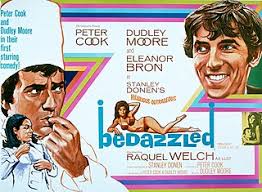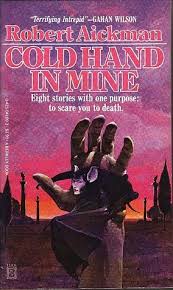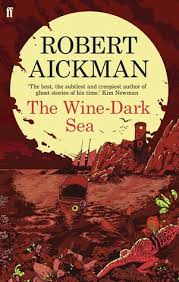
© 20th Century Fox
From the mid-1960s to mid-1970s, Raquel Welch was probably the cinematic sex symbol as far as unreconstructed blokes in the Anglosphere were concerned – blokes who were a bit intimidated by the exoticness and general foreignness of, say, Brigitte Bardot or Ursula Andress. Welch, who sadly died last week at the age of 82, was Chicago born but raised in San Diego. Her time in the latter location seemed to imbue her with a healthy, clean-cut Californian glow that was an obvious physical advantage to her in her film roles. Cerebrally, though, she didn’t win a lot of respect from her (mostly male) peers. This sorry state-of-affairs was epitomised by some advice that Don Chaffey, director of One Million Years BC (1966), offered her early on in that movie’s filming. Her function, he explained, was not to think, but merely to run from one rock to another.
I should say that when Raquel Welch was at the height of her popularity, I was too young to actually fancy her. Instead, I just remember her as a talismanic presence in a number of movies that I found incredibly enjoyable at the time and that have stayed in my memory during the decades since. Here are my half-dozen favourites that showcase the late, great Ms Welch.
Fantastic Voyage (1966)
In this science fiction epic, Welch plays Cora Peterson, technical assistant to a brain surgeon (Arthur Kennedy) and member of a medical team who are miniatured in a submarine and injected into the bloodstream of a seriously injured scientist. Why? Well, there’s a blood clot lodged deep in his brain that can’t be reached on an operating table, and the only option is to have miniature people inside him zapping the pesky clot to buggery with a laser beam. Which makes sense.

© 20th Century Fox
As the scientist is a leading expert in the field of miniaturisation, which apparently is being developed on both sides of the Iron Curtain, it’s no surprise when it transpires that the Soviets have put a secret agent on board the submarine to sabotage the mission. Neither is it a surprise when this secret agent turns out to be a character played by the reliably-twitchy Donald Pleasence. Actually, Pleasence’s death-scene, in which he falls victim to a hungry white blood-cell, is worth the price of admission alone.
Yes, it’s all very silly. In fact, when he wrote the film’s novelisation, the respected sci-fi author and professor of biochemistry Isaac Asimov tied himself in knots trying to make its plot seem more scientifically feasible. But with imaginative sets representing the inside of the human body, and decent special effects depicting the movements of the cast and their submarine within this strange micro-verse, and capable direction by underrated filmmaker Richard Fleischer, it’s a piece of hokum that’s both entertaining and memorable.
One Million Years BC (1966)
To be fair to director Don Chaffey, running from rock to rock was pretty much all that Welch, as the cavewoman Loana, and John Richardson as her caveman beau Tumak, needed to do for the duration of One Million Years BC, whilst trying to escape the claws and fangs of legendary special-effects man Ray Harryhausen’s stop-motion-animation dinosaurs. The film, made by Hammer Films, is even sillier than Fantastic Voyage. Not scripted with much attention to paleontological science, it depicts Welch, Richardson and the rest of the human cast existing alongside monster-lizards in the Calabrian Stage of the Pleistocene Epoch. Nonetheless, Harryhausen’s splendid work transforms it into pulp-art and its poster, with Welch standing imposingly in a fur bikini, became one of the great cinematic images of the 1960s. It’s the last poster, for instance, on the wall of Tim Robbins’ cell in The Shawshank Redemption (1994), sneakily concealing the tunnel that he’s digging out of the place.

© Hammer Films / Seven Arts
In the late 1990s, while I was living in Edinburgh, Ray Harryhausen appeared one day at the (now sadly defunct) Lumiere Cinema to give a talk about his movie-making career. I attended, and I recall the queue that formed afterwards at Harryhausen’s table as people got him to autograph items related to his films. Many of these were posters and video cassettes of One Million Years BC and I remember him demanding, “Did you buy these because of my dinosaurs or because Raquel Welch is on the cover in a fur bikini?”
Bedazzled (1967)
This being the late 1960s, it was inevitable that Welch would appear in a number of self-consciously groovy, achingly unfunny swinging-sixties comedy-movies, such as Leslie H. Martinson’s Fathom (1967) and Joseph McGrath’s The Magic Christian (1969). However, I do like Stanley Donen’s Bedazzled, a comic retelling of the Faust story with Peter Cook and Dudley Moore. Cook is the devil, trying to ensnare the soul of the hapless Moore, and he enlists the Seven Deadly Sins to help him. Welch, as Lust, is definitely the most fetching of the sins – not that she has much competition, considering that, for instance, Barry Humphries plays Envy.
By the way – a shout-out for Bedazzled’s lovely opening credits, orchestrated by Maurice Binder and accompanied by Moore’s brassy but also subtly-melancholic theme music.

© 20th Century Fox
Bandolero (1968)
God, when I was a western-daft 10-year-old, I loved Bandolero. Directed by seemingly inexhaustible western-movie director Andrew V. McLaglen, it contained everything I could have hoped for – action, humour, bank robberies, ghost towns, a gang of outlaws, a rival gang (consisting of bloodthirsty Mexican desperadoes, the bandoleros of the title), a tenacious sheriff and his posse, and a climactic shoot-out where (nearly) everyone gets killed. The cast is excellent too. In addition to Welch, there’s Dean Martin and James Stewart as the brothers leading the outlaws, the ever-reliable George Kennedy as the sheriff, and a supporting cast of familiar faces like Andrew Prine, Will Greer and Denver Pyle. You even get a glimpse of former Tarzan actor Jock Mahoney, playing Welch’s quickly-killed-off husband.
All right, even at the age of 10, I knew Bandolero was pushing it a bit to have us believe that Dean Martin and James Stewart could be siblings. Still, it seemed more credible than another western I saw at the same time, The Sons of Katie Elder (1965), which posited Dean Martin and John Wayne as siblings.
Hannie Caulder (1971)
Another western and a rare beast indeed, a British-made western. It’s immeasurably better than other British efforts in the genre, such as Michael Winner’s dreadful Chatto’s Land (1972) or, gulp, Carry On Cowboy (1965). And unlike Bandolero, which had Welch as a damsel in distress, Hannie Caulder has her playing a proactive, implacable female Clint Eastwood-type, seeking revenge on the three outlaw scumbags who raped her and murdered her husband.

© Tigon Films / Paramount Pictures
Admittedly, the tone of Hannie Caulder is badly fractured. The villains who behave so heinously towards Welch in the movie’s early stages are otherwise portrayed as a trio of comic bumblers in the tradition of the Three Stooges, and the humour feels jarring. But if you can get past that, you’ll enjoy a cast that’s even better than the cast of Bandolero. Essaying the villains are legendary character actors Ernest Borgnine, Strother Martin and Jack Elam, Robert Culp turns up as a bounty hunter trying to help Welch out, and Northern Irish actor Stephen Boyd, one of Welch’s Fantastic Voyage co-stars, makes a cameo as a mysterious preacher. The fact that Hannie Caulder was made by Tigon Films, a company more famous for its horror movies like Witchfinder General (1968) and Blood on Satan’s Claw (1970), perhaps accounts for producer Tony Tenser casting Christopher Lee as the gunsmith who provides Welch with the customised weapon necessary for taking down her antagonists. There’s even room for Diana Dors, a sex symbol from an earlier era, playing the mistress of a bordello adept at battering obnoxious customers with her frilly umbrella.
Almost inevitably, Hannie Caulder is much-loved by Quentin Tarantino, who cites it as an influence on his Kill Bill movies (2003-4).
The Three / Four Musketeers (1973-74)
This double-movie adaptation of Alexandre Dumas’ 1844 novel was directed by Richard Lester, the man who helmed the two comedic Beatles movies in the 1960s. He’d even, at one point, considered making a film where the Fab Four played the musketeers. The Three and Four Musketeers are laced with many of Lester’s comic touches, often involving his regular collaborator Roy Kinnear, and Spike Milligan, who appears in the first film as Welch’s husband – surely the unlikeliest husband she was ever paired with onscreen. Welch herself shows good comic talent, for example, at the end of The Three Musketeers where she gets knocked over by a jousting dummy. At the same time, the films’ action sequences, orchestrated by the great sword-fight choreographer William Hobbs, look unnervingly realistic. They come across as haphazard, exhausting and, yes, dangerous. With Lester’s humour and Hobbs’ authenticity, then, the films shouldn’t work… But somehow, they do.
In my mind, however, what makes these the best cinematic version of Dumas’ book is the fact that they’re packed with 1970s cinematic icons – Welch as heroine Constance Bonacieux, Michael York as hero d’Artagnan, Faye Dunaway as the villainous Milady, Christopher Lee as the equally villainous Rochefort, Charlton Heston as the equally, equally villainous Cardinal Richelieu, Oliver Reed as the brooding and frankly Oliver Reed-like Athos… And so on. Welch appeared in a few more films afterwards, but none were especially memorable and her time as English-language cinema’s number-one female pin-up had evidently passed. But she could have done much worse than step out of the limelight with the Musketeers movies.

© 20th Century Fox




